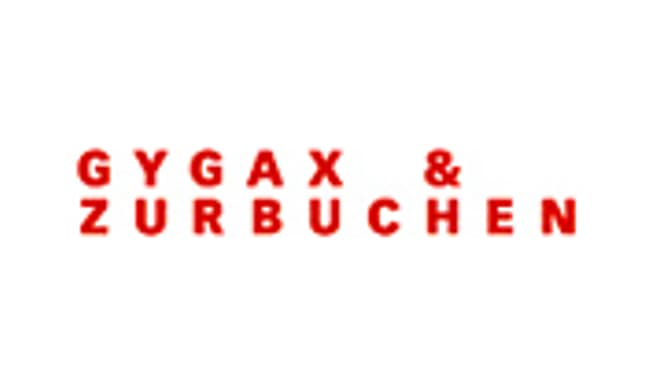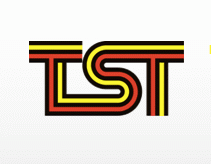Please use Microsoft Edge, Google Chrome or [Firefox](https://getfirefox. com/).
Gygax & Zurbuchen GmbH Physiotherapie Trainingstherapie (Bern)
Do you own or work for Gygax & Zurbuchen GmbH Physiotherapie Trainingstherapie?
About Us
General physiotherapy
Physiotherapy after accidents and orthopedic surgery. Thanks to our specially designed training equipment, we are able to specifically promote strength building during the rehabilitation phase after orthopedic or neurosurgical interventions, as well as after fractures of all kinds. The low minimum weights allow us to start strengthening early on the equipment without exceeding permitted limits or ignoring pain. Despite the technical possibilities in our practice, it is indispensable that patients also perform regular exercises at home. We support them in their own initiatives and work out individual home programs together with them.
Physiotherapy after hand surgery Thanks to experience in the acute hand surgery department with sometimes complex surgical procedures, we can offer physiotherapy in the area of joint mobilization and pain management.
Physiotherapy for back problems of all kinds. As with any physiotherapeutic treatment, a thorough examination is the first step. We work with both time-honored methods and testing as well as computer-assisted measurement technology to assess back joint mobility.
Depending on the results of the examination, various manual techniques, massages and strengthening techniques are applied, often supported by passive measures such as electrotherapy, heat applications or ultrasound.
Physiotherapy for geriatric patients. In addition to our work within the practice, we also provide physiotherapy for the nearby Burgerspital. The treatment of geriatric patients is always a new and great challenge. Here, knowledge in the treatment of osteoporosis, neurological damage or gait insecurity is required.
Special techniques
Lymphatic drainage
This treatment method is used in case of swellings caused by interruption of lymphatic channels or in case of insufficient function of the lymphatic system. In most cases it is mandatory that the lymphatic drainage is supported by bandaging and later consequent wearing of support stockings. Indication: e.g. st. n. lymph node removal in case of mastectomy, generally after operations long lasting swellings. Lymphatic drainage can be applied to the whole body including the face.
Respiratory physiotherapy
In respiratory physiotherapy, which is carried out in our clinic according to the principles of analytical respiratory physiotherapy according to Postiaux, Chevallier and Schenker, and of course always supplemented with new findings, we mainly treat:
- Patients with secretion: e.g. CF, bronchiectasis.
- Patients with obstructive diseases: COPD, chronic bronchitis, bronchial asthma
- Patients with restrictive diseases of various genesis.
The principle here, as in physiotherapy in general, is to carry out an adapted respiratory physiotherapeutic treatment on the basis of objectifiable findings, supplemented e.g. by endurance training or manual forms of therapy (e.g. joint mobilizations in the thoracic region).
Incontinence therapy for women
The problem of incontinence is usually due to forgotten and therefore inactive pelvic floor muscles. As a result, one often finds oneself forced to limit one's usual activities (for example, sports) and social contacts. In physiotherapy there is the possibility to specifically act on these muscles.
With a doctor's prescription, the health insurance company covers the costs of this treatment. However, it is also possible to be treated at one's own expense without a prescription. Only women with incontinence problems are treated in our physiotherapy.
It goes without saying that the therapy is carried out by a physiotherapist.
Manual Therapy SAMT (Schw. Arbeitsgemeinschaft für manuelle Therapie)
Manual therapy is mainly used for back, joint and muscle pain. These are complaints caused by incorrect strain, accidents or illnesses. The physiotherapist, who specializes in manual therapy, uses targeted hand movements to restore mobility to the spine and joints.
He releases blockages as well as muscular tension, he corrects disturbed joint functions and can thus relieve pain. Accurate positioning of the affected joints is central to this process. The therapist then applies brief mobilizing pressure to the joint to release the blockages. In doing so, the release sometimes produces a cracking sound. However, this is not to be confused with manipulation by a chiropractor. The physical therapist mobilizes (without impulse), the chiropractor manipulates (with impulse).
Just as important as the therapy is the subsequent rehabilitation program. To prevent relapse, the physical therapist creates individualized rehabilitation and training programs.
Trigger point treatments / Dry needling
About four decades ago, American scientists discovered that under stress, certain transmission points between the nerves and the muscles can become diseased, causing certain fibers in the muscle to tighten and shorten. These strands pinch off the blood and oxygen supply, causing severe localized pain, as in a heart attack. These tender spots in a tense muscle strand are called trigger points. If the disturbance is severe, these trigger points produce ongoing pain; if the disturbance is less severe, only moving and stretching the muscle hurts.
Due to the continuous bombardment of stimuli in the pain-conducting nervous system, certain pain transmission substances can overflow in the spinal cord and set other pain pathways into operation. This is the reason why severe or chronic pain is eventually felt in parts of the body that have nothing to do with the injury.
Diseased muscle areas can be healed even after years. With hand movements or with needles, the affected muscle points can be influenced in such a way that the blood circulation in the trigger points is restored and that the pain disappears in the process. However, it is not always possible to achieve freedom from pain again. If the pain is severe and already long lasting, the pain receptors in the muscles have been sensitized. At certain points in the spinal cord, the pain pathways begin to send idle pain stimuli to the brain. There, a pain memory sometimes establishes itself that maintains pain sensations even when no more noxious stimuli are acting in the periphery. Worry, fear, and negative emotions reinforce such processes in the nervous system. During these chronicizing processes, certain parts of the body become so sensitive in the periphery that they can hardly be touched. Treatment with hand grips then becomes impossible.
If you suffer from troublesome pain, it is worthwhile for you to be examined by a doctor who is well versed in muscle pain (in myofascial pain syndromes). And you may benefit from being treated by a physical therapist who has learned the techniques of trigger point therapy, which are not simple. The sooner your pain is expertly assessed and treated by interested professionals, the sooner there is the possibility of regaining full freedom from symptoms.
Trigger point therapy also requires you to contribute. Your therapist works on the areas of the body where the most pain can be provoked. This is not comfortable. However, with a trained trigger point therapist, you can stop treatment at any time with the word "stop" if it becomes too much for you. Not everything has to be cured in one day. If the pain is unbearable, you can be alleviated with cold air or an ice pack, or the doctor can give you an injection before the treatment.
After a trigger point treatment, the treated part of the body will hurt for a few days. The skin will be somewhat irritated by the treatment and sometimes there will be a small bruise in the treated area. It supports the healing process if you take a hot bath after the therapy and, if necessary, swallow an anti-rheumatism tablet for two to three days.
What you can do further to speed up healing:
- You should quietly stretch each treated muscle for 2 x 30 seconds daily for a few weeks.
- If the pain allows it, you should start doing some sports again 2 times a week: Walking, jogging, cycling, swimming, weight training, Vita Parcours, gymnastics, yoga, Feldenkrais, Qi Gong, dancing, etc.
- Pay attention to postures and operations in everyday life that cause pain and try to avoid them.
If you have questions, you should ask them to your treating physiotherapist and do not let go until you have gained clarity about your pain and about treatment options.
Dry needling is another method for treating trigger points. Dry needling is proving to be a valuable adjunct to manual trigger point therapy for many patients. Especially for those patients who suffer a lot from the strong pressure that has to be generated during the treatment, the Dry Needling method is a good alternative. A needle is inserted into the trigger point and left there for a short time. This form of therapy is gentle, but cannot be performed on all parts of the body. It is also not suitable for patients on blood thinners.
This text has been machine translated.
Languages
Location and contact
Gygax & Zurbuchen GmbH Physiotherapie Trainingstherapie
-
office address
Bubenbergplatz 8 3011 Bern
-
Phone
0313... Show number 031 318 46 36 *
-
Write an e-mail
- Visit site Visit site
- * No listing required
reviews
Do you wish to rate "Gygax & Zurbuchen GmbH Physiotherapie Trainingstherapie"?

1 reviews from older local.ch. archives
Data from June 2019
* These texts have been automatically translated.
Other listers

Gygax & Zurbuchen GmbH Physiotherapie Trainingstherapie




